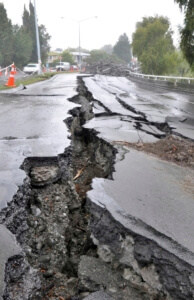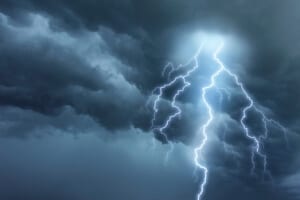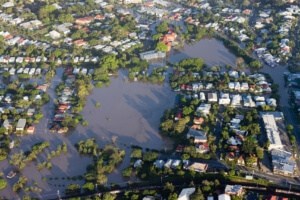 In the chaotic wake of natural disasters such as hurricanes (Hurricane Matthew reached Category 5) or earthquakes, communications are crucial to response and recovery efforts. Emergency response crews need to be confident that they have a reliable, resilient system to continue their communications and assist with rescue efforts.
In the chaotic wake of natural disasters such as hurricanes (Hurricane Matthew reached Category 5) or earthquakes, communications are crucial to response and recovery efforts. Emergency response crews need to be confident that they have a reliable, resilient system to continue their communications and assist with rescue efforts.
So why do radios continue working during times when power has gone out and significant damage has been caused to the landscape? Radio networks hold several key features that make it the reliable backbone for critical communications in times of emergencies.
1) Power back-ups
Mobile radio networks are most often designed to withstand prolonged power outages. Network and repeater sites are built with features such battery backup, generators, or wind or solar power. When a significant event takes out power, sites can be programmed to automatically switch over to their backup power source, enabling the radio infrastructure to continue working. These sites are typically provisioned for several days of external power failure.
2) Off-network calls
And even when power outages do occur, mobile radio within a district will continue to operate in simplex, or direct, mode. In this mode, the transmitter and the receiver operate on the same frequency and do not rely on repeaters. This means that in the event of the network infrastructure being down, hand-held portables and vehicle-based mobiles can continue to talk around the network. Radio users with line of sight can continue talking to each other, even as far as several miles apart if there is no significant obstruction between them.
3) Dedicated channels
Following a disaster, congestion often overloads networks, especially cellular available to the public, leading to call and text failures. In order to mitigate this, radio networks used for critical communications provide dedicated channels for the organizations that use them. While radio networks can still bec ome congested during these times, management of the system allows for emergency call prioritization, ensuring that high-priority calls continue to get through.
ome congested during these times, management of the system allows for emergency call prioritization, ensuring that high-priority calls continue to get through.
4) Mobile & portable battery life
Having a functioning network is of no use if emergency response crew members don’t have portable and mobile radios to use on it. Emergency personnel may be out in the field for unpredictably long periods of time, and they need handheld communications devices that they can depend on to last as long as they need them to. Portable radios are purpose-built for extended periods of use. A typical shift life is about 8-12 hours, depending on the Tx/Rx/Standby duty cycle. They are also able to be recharged via vehicle chargers or spare battery packs, if necessary.
5) Robust, resilient design
In emergency response situations, the environment is often quite extreme, and first responders may be subject to heat, rain, mud, rubble, dust and other challenging conditions. Not only must the portable devices they take into the field be able to withstand these environments, but the rest of the network must be resilient as well. Rugged, robust portables, mobiles, and networks are vital to ensuring critical communications remain operational. Radio equipment such as Tait Tough products are engineered to operate in extreme conditions, and provide a reliable network to ensure communication stays intact.
The recent magnitude 7.8 earthquake in Kaikoura, New Zealand was a good example of the resiliency of radio networks. The prime reason the NZ Police radio network did not lose service and enabled them to continue communicating was two-fold:
Firstly, the Police radio networks have their own dedicated linking infrastructure (usually dedicated microwave, MiMOMax, or radio links) between sites. Often these links are designed with redundancy in mind (two paths to any site), so that a break in a path won’t necessarily cause failure of the network. Secondly, even if the linking connection to a radio site disappears, most radio sites will still run autonomously providing local communications, meaning that within the same district, they could continue talking.
To learn more about preparing your organization in the event of a disaster, download our free white paper, Race Against Time; Emergency Response – Preventing Escalating Chaos in a Disaster.
Find out more about strengthening your LMR system by downloading our free guide, 10 Ways to Protect and Strengthen Your LMR System.



